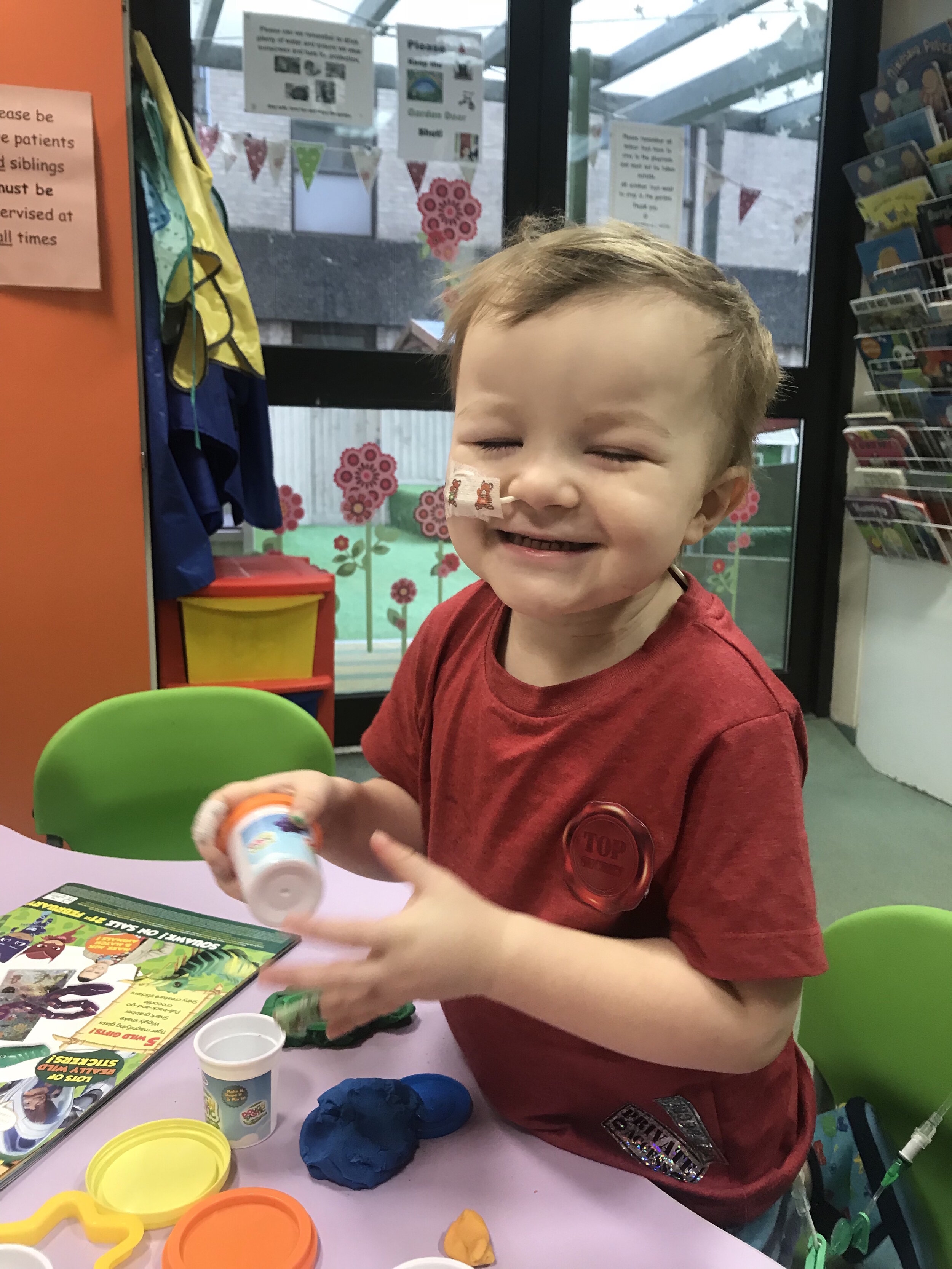
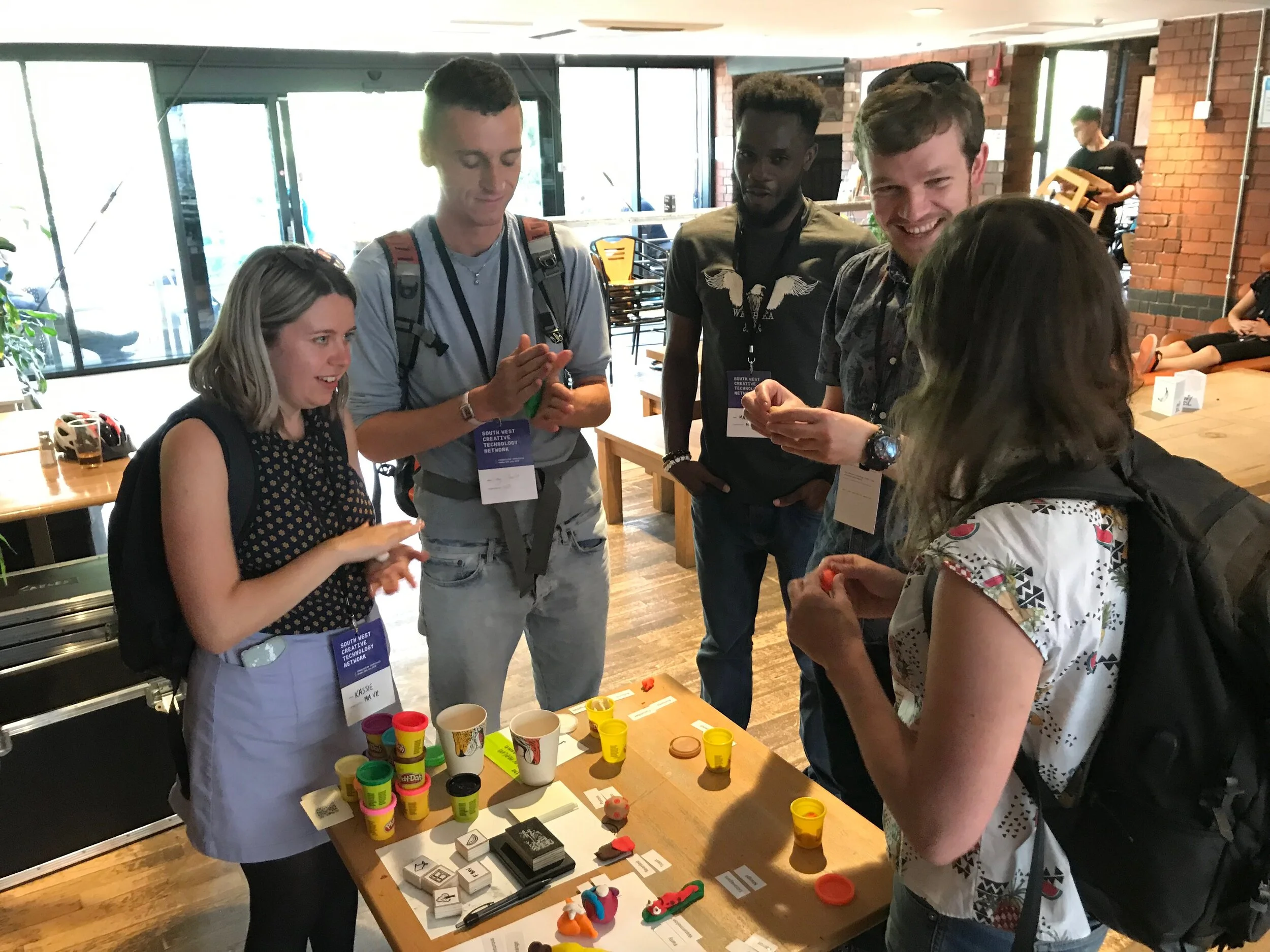
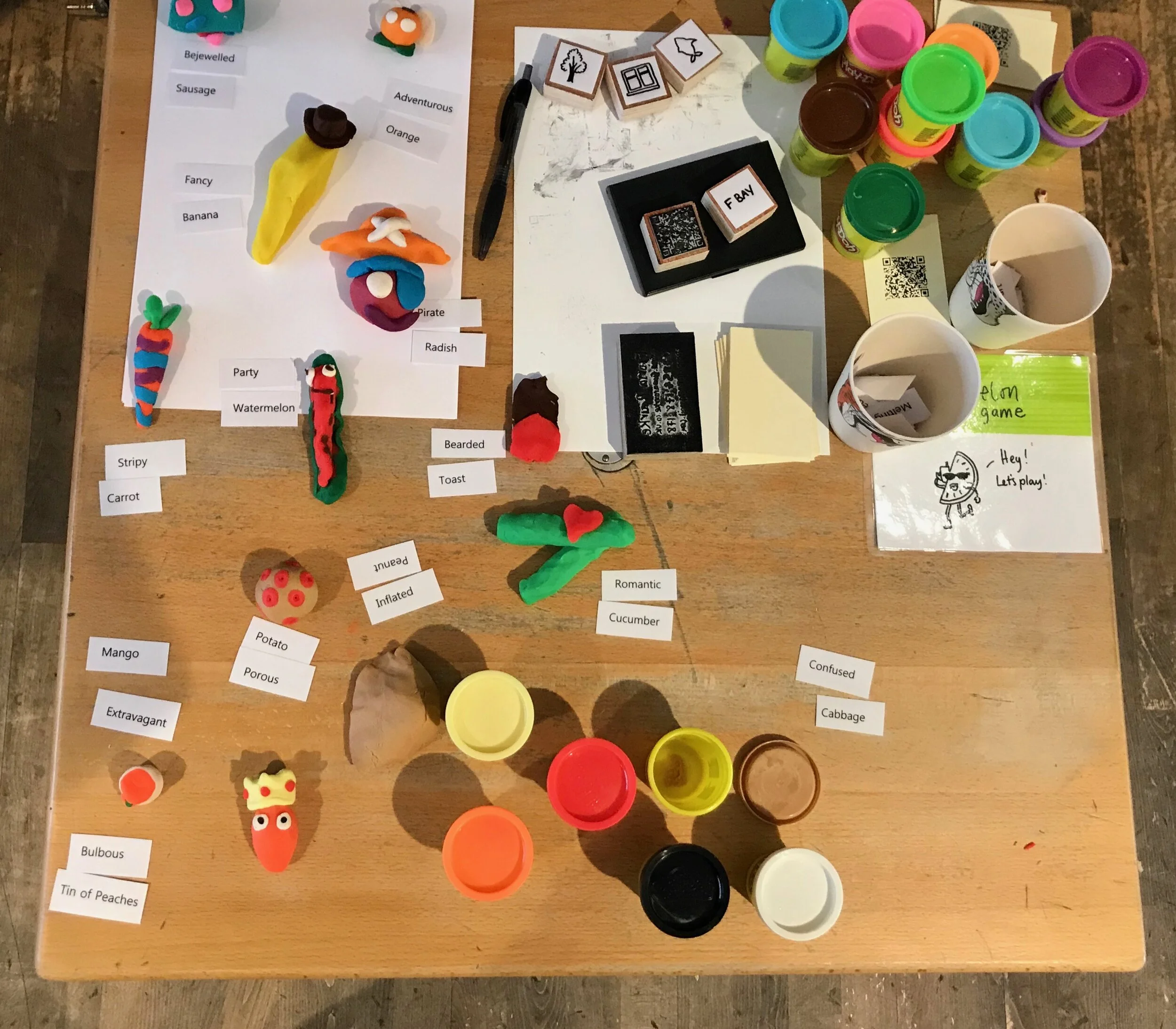
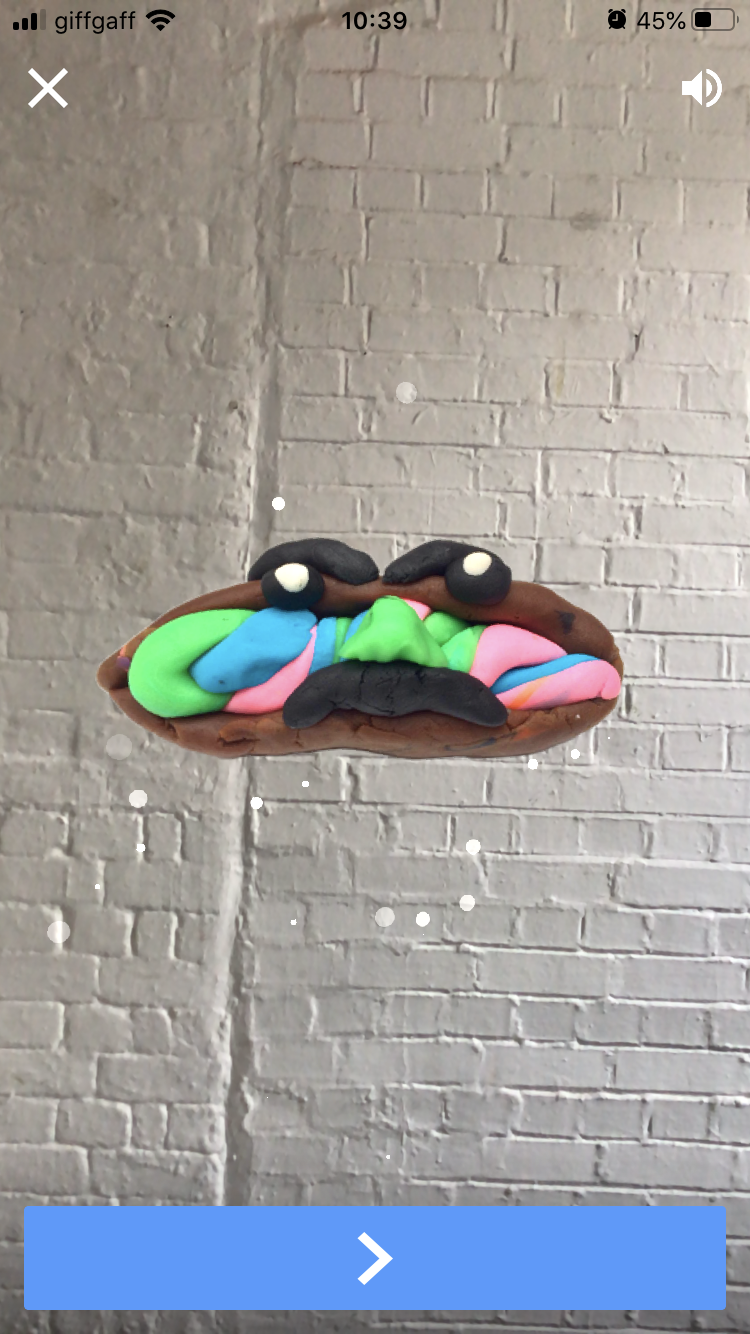
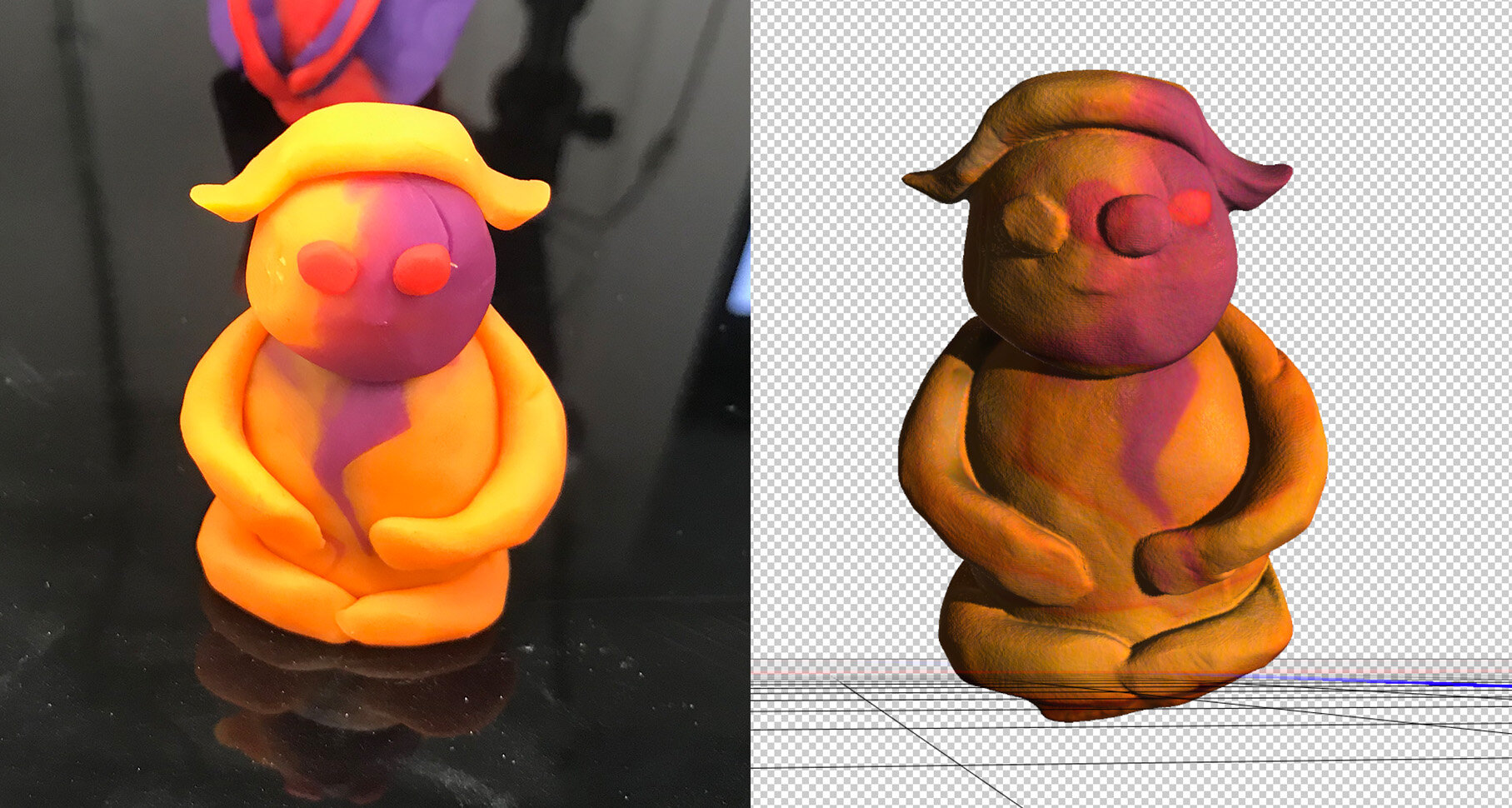
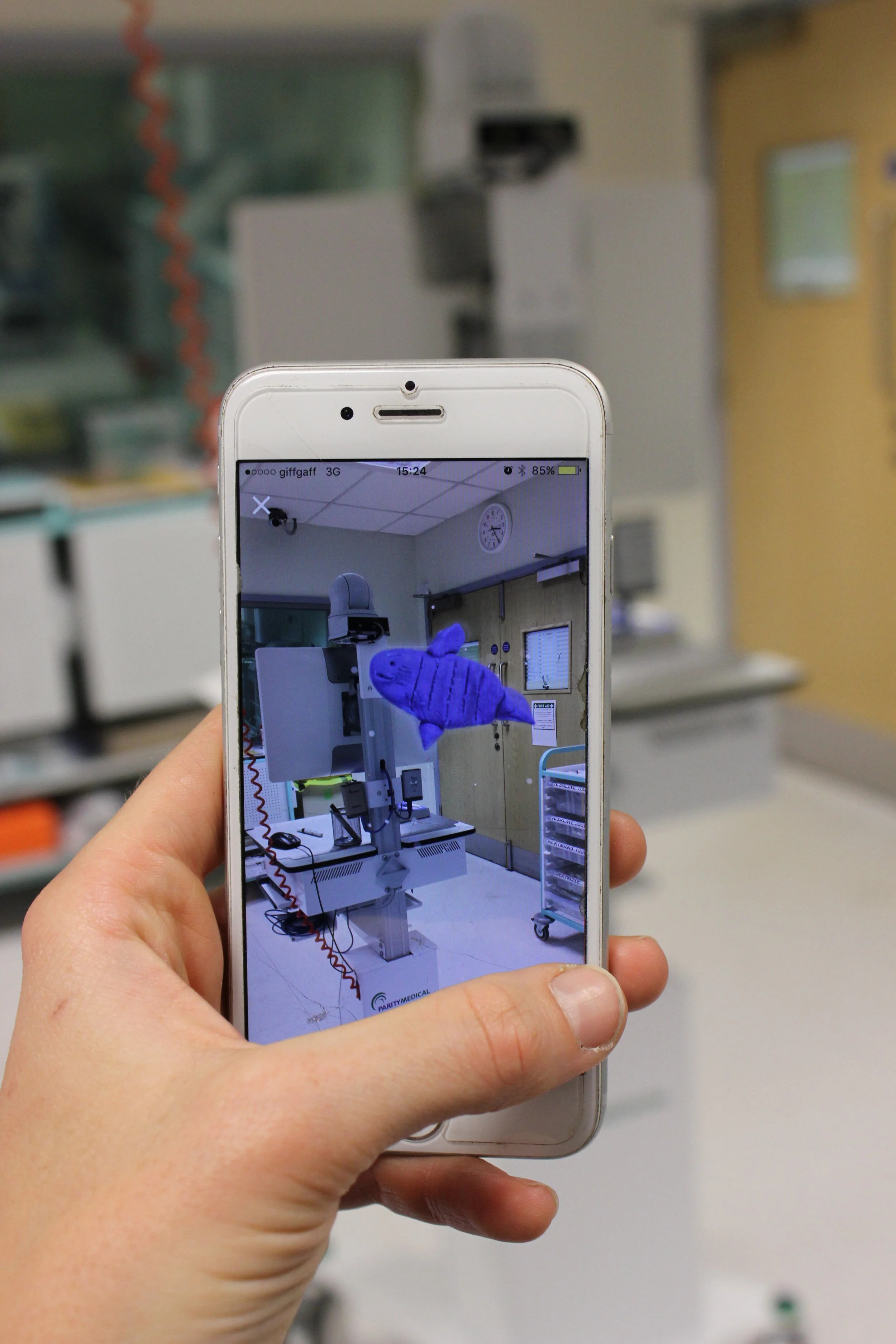
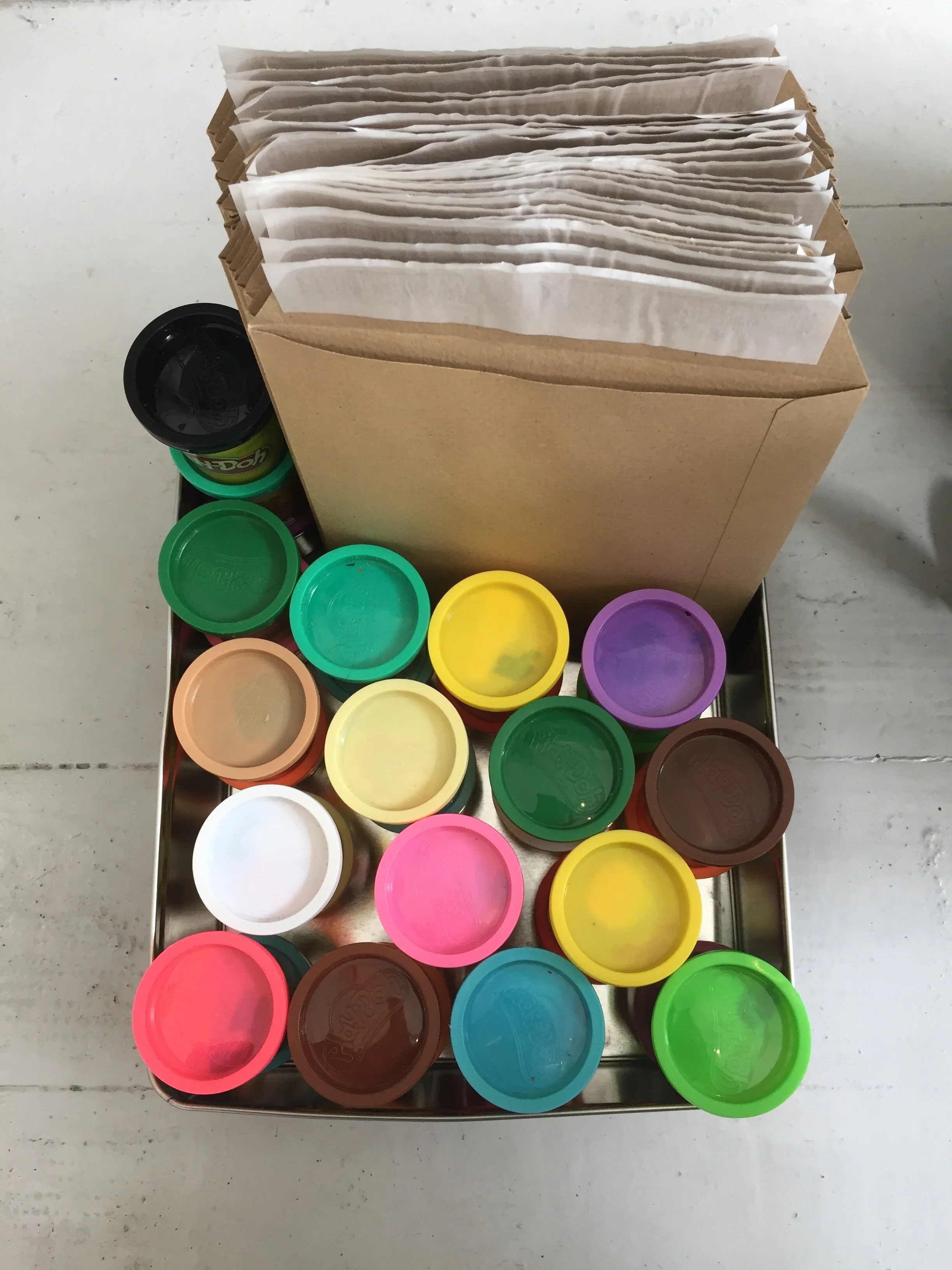
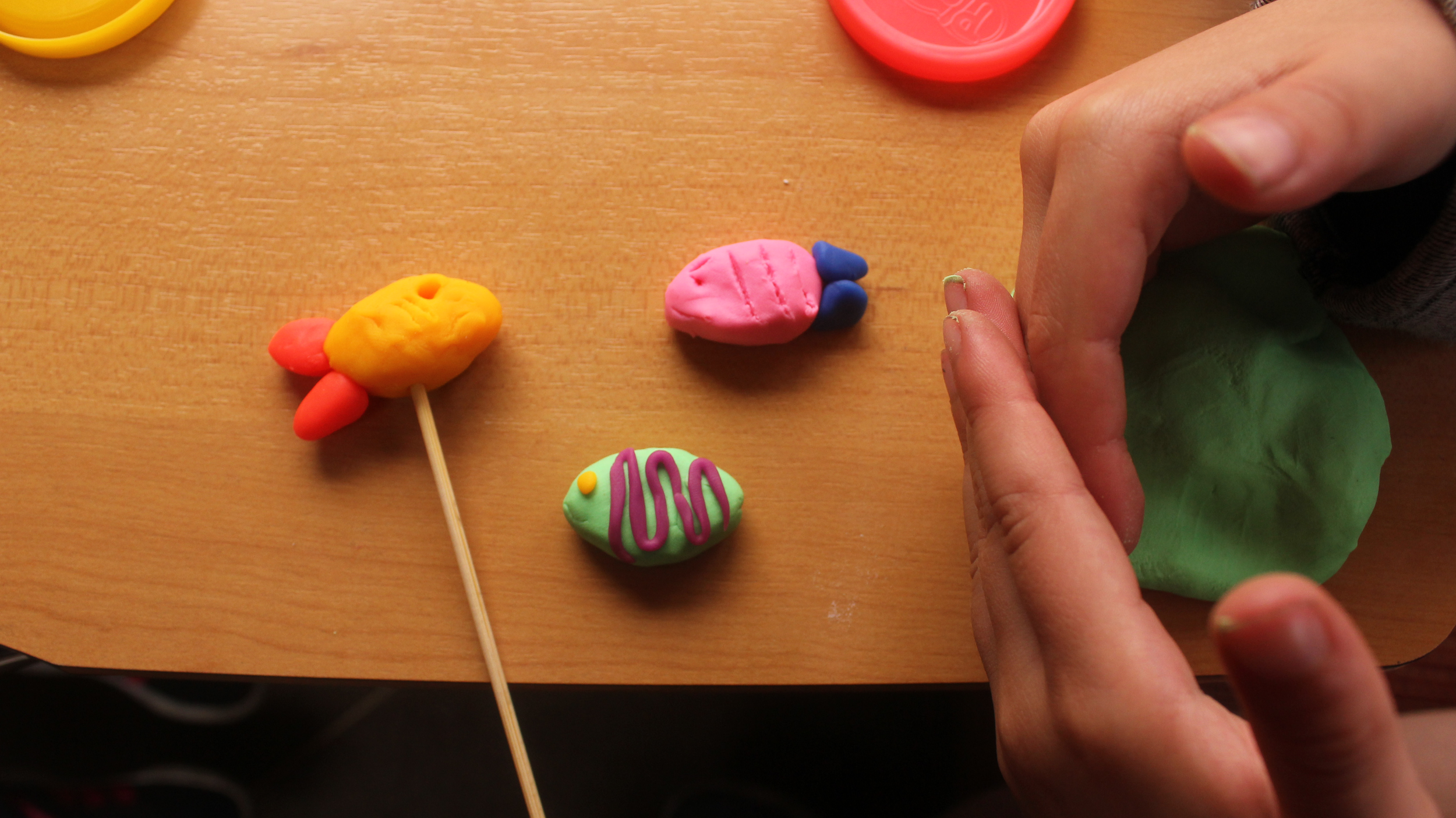

This is Joe, co-designer of the Watermelon Game. In this game participants are asked to make a new guest to come to Watermelon’s party. These are then translated into augmented reality interventions.
Based on the extraordinary adventures of Joe and his imaginary friend Watermelon during Joe’s long stints of treatment in hospital. Packs include play dough, instructions and prompts for creating interesting new friends to bring to the party.
We Are Better Together is a project exploring using tactile physical play and creative immersive technologies to improve communication between families, communities and individuals experiencing isolation.
We work with healthcare and play specialists alongside lived experience families and technologists to create user-centric interventions that are co-authored by those who need it the most.

This project has been supported by Kaleider and the South West Creative Technology Network (SWCTN).
Here we presented the first stages of the Watermelon Game at the Immersion Showcase in Watershed Bristol.
The engagement was really positive and the use of both prompts and the project narrative (presented as a book) seemed to give adults permission to get involved with making play dough characters.

Here are some play dough characters that came out of our making session at the SWCTN showcase. The simple prompts were pulled from cups to give adults a starting point to work from.

The concept behind creating these characters was that eventually they would end up in an augmented reality (AR) platform along with some audio narrative. Produced by the family members and friends of children who are isolated in hospital the play dough AR characters are intended to be a way of children personalising their environment.
It is also the intention to use this method as a new way of communicating that can happen at a slower pace than real-time. This it can flex around the disparities between hospital life and external life, as these often don’t marry up and make communication hard to navigate.

As a lot of my tests have actually been using 2D PNG files pasted into an AR platform I started to explore how we might start adding the play dough into AR as 3D assets.
Unfortunately I had limited success with standardising any photogrammetry using phone/tablet cameras (the phones and tablets I expect patients to have will be very varied). These scans were done with a 3D turntable scanner over at Plymouth College of Art FabLab. The results are pretty good considering but it does seem like there is a tech gap while these functions catch up on mobile devices.

Here is an example of a fish my brother made in play dough floating around in a hospital room.
These interventions give patients more agency over the space by allowing them to create a world within their room which can move with them when they get reallocated rooms around the hospital.

What could a simple resource pack look like to encourage play in isolation? These envelopes had simple pages and adapted prompts from the ones used in the SWCTN Immersion showcase. We kept to using playdoh to create characters.
Unfortunately during the Covid-19 pandemic the oncology ward we were working with was unable to recieve any items from outside the hospital for pateints.
Instead we ran a light local workshop to test if the instructions were easy to follow and the tasks enjoyable. We included prompts to capture and share images of playdoh creations and some audio content from their creators.

Having spent some time exploring potential materials and technology the next step is to work with lived experience patient/carer groups to explore play in isolation.
The intention is to create a community of lived-experience professionals and to greater understand what great play looks like in an isolated hospital setting.